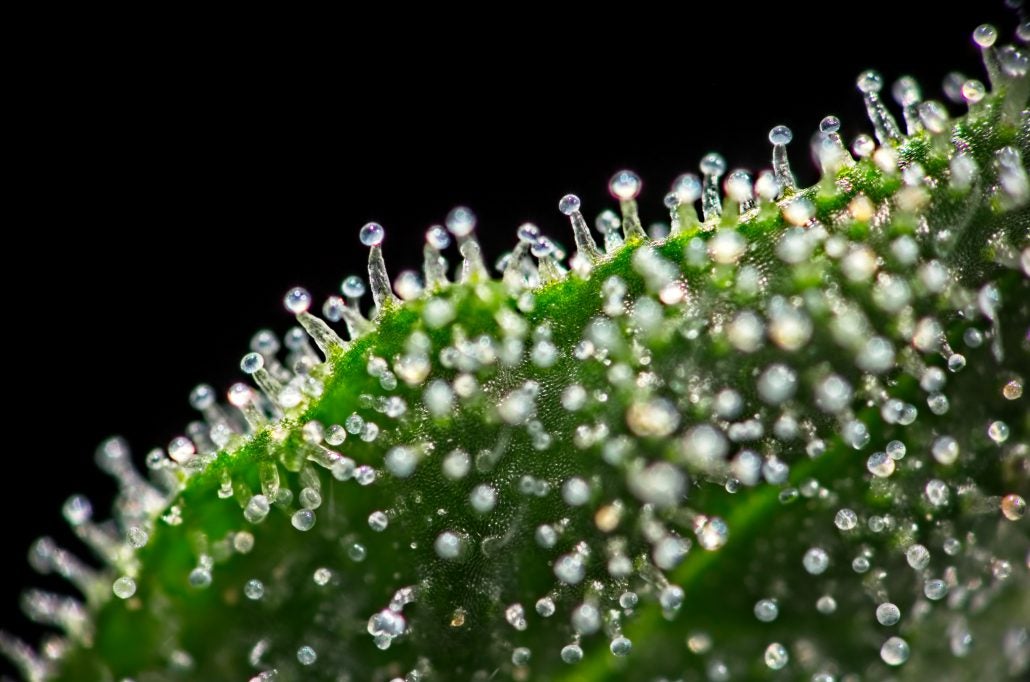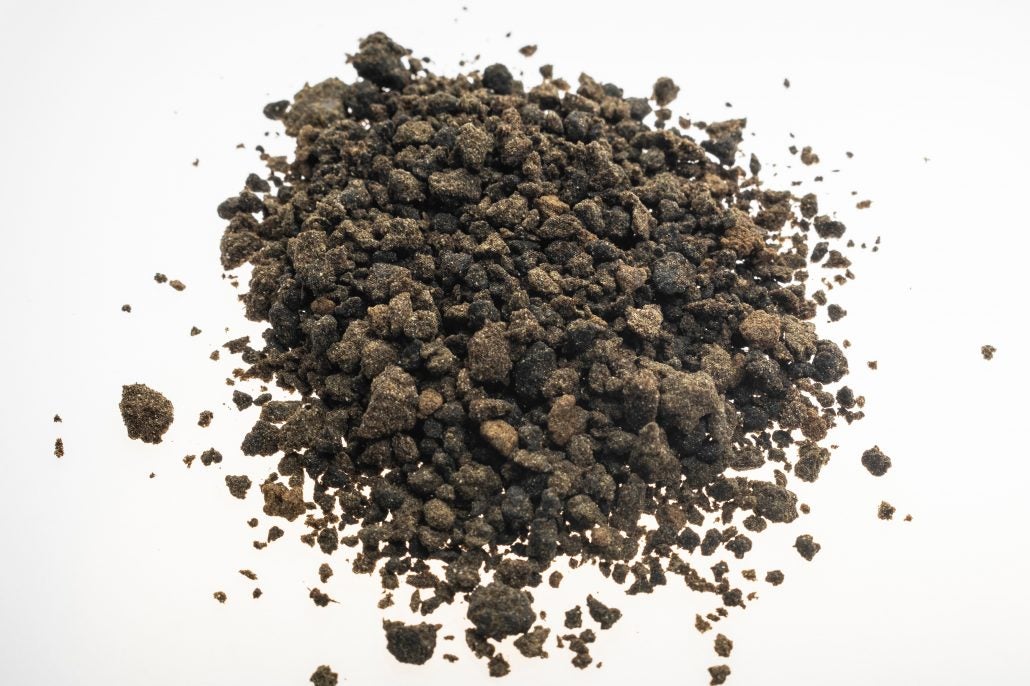Hash can be an excellent alternative to cannabis flower. Also known as hashish, it offers a range of effects and potency levels, and it also has the distinction of being one of the first cannabis concentrates ever.
People have been using different methods to make hash for hundreds of years— the easiest of which is simply pressing it together by hand— and it comes in the form of oil, resin, or dry-pressed.
For everyone wondering what it’s all about, let’s look at some of the different types of hashish and help you find the best kind for you.
What is Hashish?
Hash is a type of cannabis concentrate created by gathering, processing and compressing the trichomes of the cannabis plant.
What are trichomes?
The trichomes look like tiny white hairs, and they’re the most important part of hash (and make up the majority of it) because they produce the terpenes and cannabinoids (like THC and CBD). You’ll find trichomes covering the entire cannabis plant, although they are most densely concentrated on the buds and leaves.
Historically, hashish has been popular in Afghanistan, Lebanon, India, and Morocco cultures.

A close-up shot of trichomes. Hash is made by collecting and pressing together those bulbs you see at the ends of trichomes.
Does Hash Get You High?
Since hash is derived from cannabis, it has many of the same psychoactive properties. However, it is often stronger as it contains a higher concentration of THC (Tetrahydrocannabinol), the cannabinoid responsible for getting you high.
What Does It Look Like?
The appearance can vary depending on the type and consistency. Typically, it takes on a solid, firm texture and a dark, chocolatey colour, although its colour ranges from lighter caramel to black coffee.
There are even lighter varieties out there that appears red or yellow, while hash oils can appear honey-coloured with a waxy texture.
How do you Use It?
In a variety of ways! While it’s most often smoked, it can also be ingested orally. It can be broken up and mixed into a joint which can help it burn more uniformly. When consumed orally, it’s best to mix with food for safer metabolism due to its low water solubility.
What are the Different Types of Hash?
The key to hash is extracting and concentrating the cannabis trichomes from the buds. Different types of hashish are made through various methods of separation, extraction, and processing.
From hand-pressed hashish to lab-based processes, there are many different ways to create this popular cannabis concentrate.
Charas (Hand-Rubbed)
Charas is the traditional name for hand-rubbed hashish, also known as finger hash. This technique is popular in India and Afghanistan.
Charas is made by collecting the resin from living cannabis plants – often ones still growing in fields.
The most significant difference between charas and hash is that charas is harvest from living cannabis plants, while hash is processed from dried and cured plants.
To make hash, you simply vigorously rub fresh cannabis plants between your hands. The rubbing causes the THC-rich resins to come out, forming tiny balls of dark, chocolate-coloured charas in the farmer’s hand.
Making charas can be quite labour intensive, and depending on how experienced you are at it, it can take over an hour of hand-rubbing to get one gram of charas.
The balls of resin should then be left to dry, and it’s recommended that charas be cured for at least a week (sometimes for several years in traditional hand-rubbing techniques!). During the curing stage, moisture evaporates from the substance, leaving behind the valuable cannabis compounds.
The result of this method and the quality of the hashish depends on the quality and potency of the originating plant, as well as how much care was taken during the process of making it.

Grab a fresh cannabis plant and repeat this motion for a few hours and soon you’ll have your very own charas!
Drysift / Kief
Another popular (and tried-and-true) method of hash extraction is the dry-sieve technique. This method uses a fine-mesh screen to gently collect the resinous trichomes from the plant.
The dried cannabis plants are rubbed over the mesh screen to separate the trichome resins from the plant.
The potency and quality of the kief (and subsequently the hash made from it) can depend on the quality of the mesh screen. The finer the mesh, the higher the quality that will be produced since there is less unnecessary plant material in the product.
Honey Oil / Hash Oil (Solvent Extraction)
Many manufacturers use solvents to make cannabis concentrates. Hash oil or honey oil is made using a solvent such as alcohol or butane to extract the crystals from the cannabis plant.
After the extraction, the solvent evaporates through heat, leaving behind a thick, viscous, highly potent cannabis oil.
Solvent extraction produces a more consistent product than other methods, although THC levels do vary depending on the cannabis plant used. The result is a transparent substance that looks like honey! The oil can be used to make edibles or smoked using a dab rig.
Some bud experts debate whether honey oil is considered a type of hash or a general cannabis concentrate.
Bubble/Ice Water Hash
Using water as the method of separation (extraction), Bubble Hash is made by placing cannabis plant material in a mesh bag and then into a specialized “washing machine” filled with ice-cold water.
When the water is gently agitated, it’s like a slow stripping of the cannabinoids using the ice water. The water vortex in the machine shifts from clockwise to counterclockwise, causing the resin glands to freeze and fall from the plant.
The material is then passed through smaller screens to catch the valuable trichome bulbs. The quality is once again dependent on how fine the screen mesh is.
Some of the nicer bubble hash is pressed with a wine bottle full of hot water, then rolled into a little cannoli roll, then it waits in the fridge, then it is re-rolled like croissant/brioche dough.
Rosin
This innovative concentrate is made by using heat to melt the plant resin. The resin is caught in absorbent material and hardens. The result is an oily material that resembles clear, golden shatter or wax.
Rosin is a solvent-less hashish method and is growing in popularity thanks to being at-home-friendly. It’s also popular due to being free of contaminants while maintaining its flavours, psychoactive effects, and aromas. Have you tried this DIY method?
Sometimes rosin gets compared to bubble hash, but rosin is different as it uses heat and compression, whereas bubblehash uses ice water and gentle agitation.
With rosin, the cannabinoids are more readily available, because the heat-pressing does a portion of the decarboxylating beforehand. It unlocks the CBN inside, lowering the THC level. But, the idea is that when you’re smoking flower, the temperature shift and speed in which it burns up does not allow for the full decarboxylation before turning to smoke
Hash Around the World
The way that hashish is produced can change depending on where you are in the world!
In countries such as India and Afghanistan, kief is sometimes mixed with water or tea and kneaded to create a toffee-like substance with high potency. In Morocco, kief is treated with pressure and heat to create a hash product. In Pakistan, farmers will cure kief on dried animal skins to enhance the end product’s texture and flavour.

The Best Types of Hash
A high-quality hashish takes time and patience and can sometimes be difficult to source. Varieties like Double Zero and King Hassan are sought after by hash lovers.
Several well-known strains of cannabis are popular for making hash due to their higher potency or high level of natural trichome production.
- OG Kush (or Lindsay OG)
- White Widow (or White Death)
- Ice
- Royal Gorilla
While there are many different types of hashish to explore, we’ve rounded up a few of our favourites on the menu.
- Domestic Afghani – “A modern twist on a classic favourite.” This pressed indica hashish is made in Canada from an Afghani-sourced strain. It’s more potent than your regular Afghani hash. This THC-heavy hash is free of any impurities and fillers and is 100% organic. Users will experience a smooth and lazy high with the aromas and flavours of traditional Afghani.
- Strawberry Guava – This pressed bubble hashish is made from one of the most popular cannabis strains in North America, Do-si-do, a cross of Girl Scout Cookies and Face Off OG. This hashish is locally made in British Columbia and offers flavourful cedar and peanut tones with sweet undertones. Perfect for sprinkling onto a joint or topping your bowl.
- Afghani Rolling Stone – This imported hash comes from one of the world’s biggest hashish-making hubs: Afghanistan. The rolling stone is made from indica-dominant cannabis strains and pressed by hand. Rolling Stone hash provides a typical, full-body indica high.
- Moroccan Hash – This is imported comes all the way from Morocco, a mecca of hash production. The country is home to a wide variety of marijuana-based products. Moroccan hash can be challenging to find in Canada, but it is well worth the search. It offers a cerebral and active high, and the taste is mild compared to other types of hash.
For cannabis users who are new to hash, Budmail has a creative option for sampling different types of hash: the Hash Sample Pack includes either 1g or 3.5g of various kinds.
Final Thoughts on Types of Hash
Hashish is one of the oldest forms of cannabis consumption and remains a popular way to enjoy cannabis concentrates. Enjoying it by smoking or other consumption methods is a great way to explore different strains of cannabis while experiencing the full range of effects.
The higher concentration of cannabinoids means that you can enjoy a higher potency for a lower price point. Who doesn’t want more blaze for the buck?
We love that there are so many different types of hash to choose from. Check out more fun ways to try cannabis concentrates.
Want to try making your own? Check out this simple guide on how to make hash!
Sources:
Healthline: What to know about Hash Oil.
Leafly: What is Hash.
Weed Seed Shop: What are the Different Types of Hash.
Zeeweed: A Quick guide to the world’s different types of hash.
Sensi Seeds: Hash 101.

